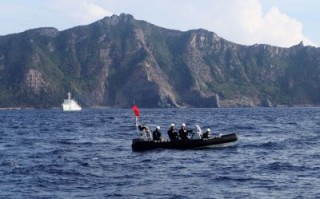Loading
Search
▼ Japan’s Senkaku Public Awareness Campaign At Risk Of Backfiring
- Category:Other
The Japanese policy debate on the Senkaku/Diaoyu islands is heating up. China’s new Coast Guard Law, passed in January 2021, stimulated nationalistic reactions in Japan.
9Hinting at the possibility of using the Japan Self-Defense Forces, the National Defense Division of the ruling Liberal Democratic Party (LDP) proposed a revision of the Japan Coast Guard (JCG) Law in March 2021 to enable the JCG to shoot intruders who attempt to land on the islands.
Pro-defence lawmakers in the LDP and defence experts want to ‘tame’ public opinion and enable further para-military and military measures against the increasing presence of the China Coast Guard (CCG). But the Japanese public is somewhat hesitant and there are signs of caution even in the government.
The Japan–China relationship has improved since 2017 but the issue of the Senkaku/Diaoyu islands — where both countries continue to claim sovereignty — has seen no sign of mutual concession.
While Japan maintains de facto administration of the islands, it has avoided constructing administrative facilities and stationing public officers. It maintains only a small lighthouse, originally built by a Japanese activist group, and deploys JCG vessels to ward off foreign intrusions in the territorial waters.
This so-called ‘weak’ administration of the Senkaku/Diaoyu islands derives from a tacit understanding between Japan and China. While the Japanese government denies it today, there was speculation during and after the 1972 normalisation of diplomatic relations that Japan and China agreed to shelve the issue for the future. There was an implicit consensus to maintain the status quo of the islands in order to avoid escalating tensions.
The Japanese government purchase of three of the islands from a private Japanese owner in 2012 — done to prevent nationalist Tokyo Governor Shintaro Ishihara from buying the islands himself — changed the situation. Since then, the presence of the CCG around the islands has strengthened and para-military confrontations between the two countries have become routine.
Though the Senkaku/Diaoyu issue is a territorial dispute, the Japanese government has presented to the public that Japan’s sovereignty over the Senkaku islands is uncontested. While China points to records of the islands in its historical documents, Japan asserts its discovery in 1884 as terra nullius.
Under this official view, the Japanese public believes that Chinese claims on the islands are provocative and the CCG presence in the territorial seas is illegal. Japanese political elites from the right and left are united in this belief.
From the 2010s, the LDP government has focussed on raising public awareness of Japan’s territorial integrity and security. Japan has two other territorial disputes, the Northern Territories and Takeshima, but these islands are occupied by Russia and South Korea, respectively.
The Senkaku/Diaoyu islands are the only ones that Japan controls. For the LDP, which has a conservative supporter base, any concession over the islands is not a policy option.
The second Abe government implemented this LDP stance as policy. The defence of Japanese territories became a sub-title in the preface of Japan’s 2013 defence white paper.
In 2013, Japan created the Office of Policy Planning and Coordination on Territory and Sovereignty in the Cabinet Secretariat. It aims to strengthen public awareness of Japan’s territorial integrity and promote Japan’s official view on the three territorial disputes.
In line with the government view, Japanese school textbooks of civic studies, geography and history are now required to include references to the three ‘territories’. After curriculum guidelines were revised in 2017–18, publishers revised textbooks to include phrases such as ‘territory inherent in Japan’, ‘Northern Territories illegally occupied by Russia’ and ‘no territorial dispute over the Senkaku islands’.
While this ‘policy of public awareness’ may appeal to conservative Japanese voters, the resolution of territorial disputes requires mutual concessions between contending countries. The policy may only harden the public’s attitude to territorial issues and make mutual concessions more difficult.
But Japanese interest in the Senkaku/Diaoyu islands has not necessarily increased, especially among younger generations. According to Japan’s Cabinet Office, 74.5 per cent of those surveyed had a strong or moderate interest in the Senkaku in 2014, but this percentage dropped to 62.2 in 2017, then rose to 65.9 in 2020. Respondents below the age of 39 had the least interest because they considered the islands unrelated to their life.
Raising awareness of Japan’s territorial integrity might be important for defence, but territorial disputes need a different approach. The national government should consider whether its policy of public awareness will escalate territorial disputes. There is a risk that the public might come to view territorial disputes as zero-sum games and even push for military confrontation.
While the waters around Senkaku/Diaoyu may have strategic importance, the islands themselves are small and barren. They have been excessively securitised by both China and Japan as a nationalistic symbol.
To resolve the territorial dispute peacefully, a broader bargain with China over the East China Sea is needed. Central to such a bargain is the idea of common interest, which was considered in the joint agreement between the two countries on the Shirakaba gas field in 2008.
An excessive focus on Japan’s territorial integrity will bear little fruit. A willingness to share the sea is needed for a sustainable diplomatic solution.
- May 4, 2021
- Comment (0)
- Trackback(0)


